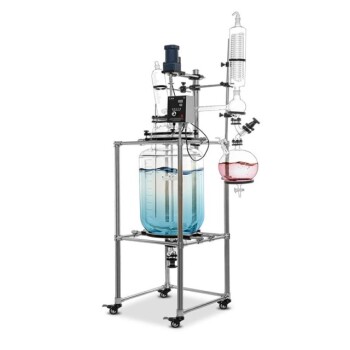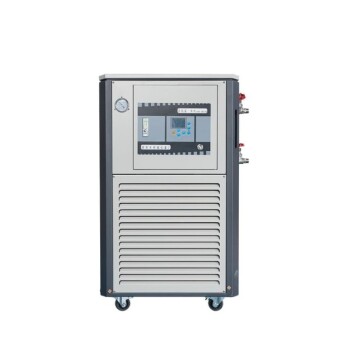Setting up a distillation apparatus requires careful attention to detail to ensure safety, efficiency, and accuracy in the process. Key precautions include ensuring all connections are secure and vacuum-tight, applying vacuum grease to joints and seals, and properly setting up cooling and heating systems. It is also critical to monitor the vacuum levels, temperature, and stirring speed throughout the process to prevent over-boiling or equipment failure. Additionally, pre-distillation steps like winterization and decarboxylation may be necessary to prepare the material for distillation. Proper setup and monitoring ensure the distillation process runs smoothly and yields high-quality results.
Key Points Explained:

-
Secure and Vacuum-Tight Connections
- Ensure all glassware and tubing joints are securely connected to prevent leaks.
- Apply a thin layer of vacuum grease to each interface, sealing surface, sealing ring, and joint to enhance the vacuum seal and prevent air ingress.
- Test the system for leaks before starting the distillation process to avoid interruptions or safety hazards.
-
Vacuum System Setup
- Draw down the vacuum to about 0.03 MPa before starting the distillation process to stabilize the system.
- Use a vacuum pump capable of reaching and maintaining a high vacuum (<50 millitorr) for short-path distillation.
- Add dry ice and alcohol to the vacuum trap to condense volatile vapors and protect the vacuum pump.
-
Cooling and Heating Systems
- Connect and activate the cooling system (e.g., chiller or cooling water circulating pump) to ensure proper condensation of distillate.
- Gradually increase the heating mantle temperature (starting at 45-60°C) to avoid sudden boiling or splashing.
- Monitor and adjust the temperature and vacuum levels throughout the process to maintain a steady distillation rate.
-
Stirring and Rotation
- Turn on the rotor of the film scraper (if applicable) and ensure it rotates evenly and continuously.
- Adjust stirring speed (900-1000+ RPM) as the fluid level decreases to maintain efficient heat transfer and prevent localized overheating.
- Listen for unusual noises during operation, which may indicate mechanical issues.
-
Pre-Distillation Preparation
- Perform winterization and decarboxylation procedures if necessary to remove residual solvents and inactive compounds from the material.
- Ensure the material is properly prepared and free of impurities that could interfere with the distillation process.
-
Safety and Monitoring
- Continuously monitor the system for any signs of over-boiling, leaks, or equipment malfunctions.
- Gradually increase temperature and vacuum levels to avoid sudden pressure changes or thermal shocks.
- After distillation, stop the heat, stirring, and vacuum pump, and allow the system to return to atmospheric pressure before disassembling.
By following these precautions, you can ensure a safe, efficient, and effective distillation process while minimizing risks and maximizing the quality of the final product.
Summary Table:
| Key Step | Details |
|---|---|
| Secure Connections | Ensure all joints are vacuum-tight; apply vacuum grease to prevent leaks. |
| Vacuum System Setup | Draw vacuum to 0.03 MPa; use a high-vacuum pump; add dry ice to the trap. |
| Cooling & Heating Systems | Activate cooling system; gradually increase heating mantle temperature. |
| Stirring & Rotation | Maintain 900-1000+ RPM stirring speed; listen for unusual noises. |
| Pre-Distillation Preparation | Perform winterization and decarboxylation to remove impurities. |
| Safety & Monitoring | Monitor system continuously; stop heat and vacuum gradually after use. |
Need help setting up your distillation apparatus? Contact our experts today for personalized guidance!




















